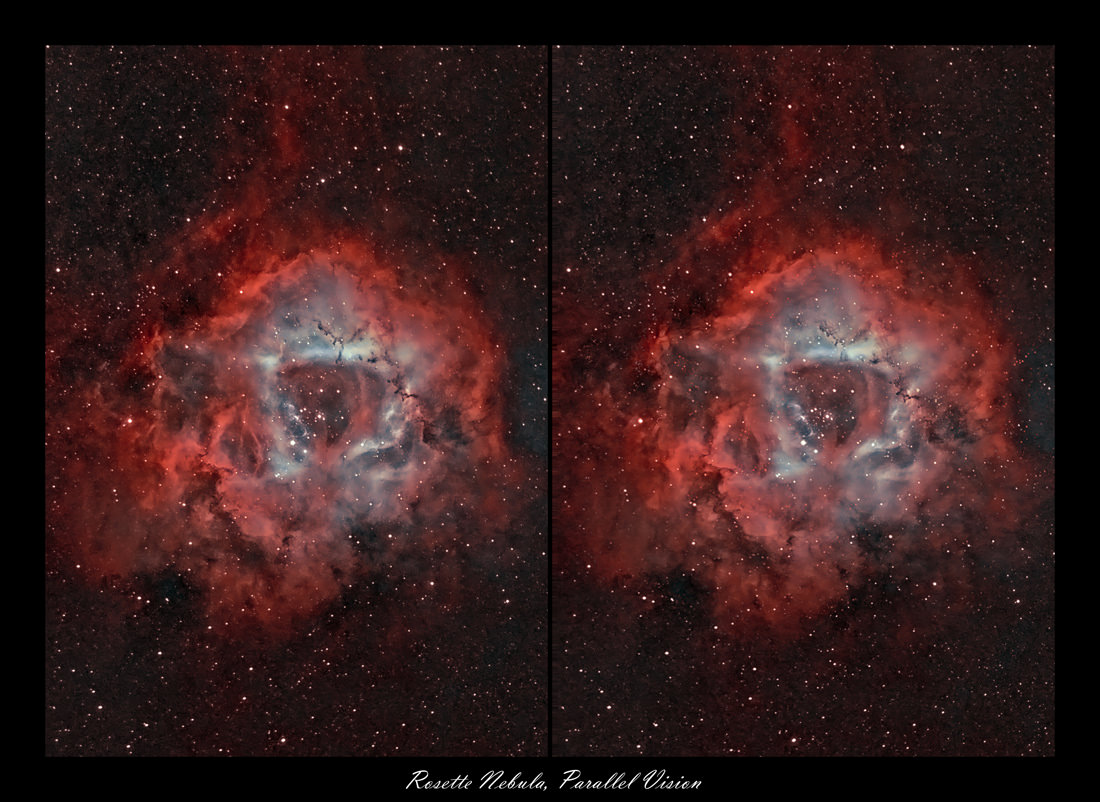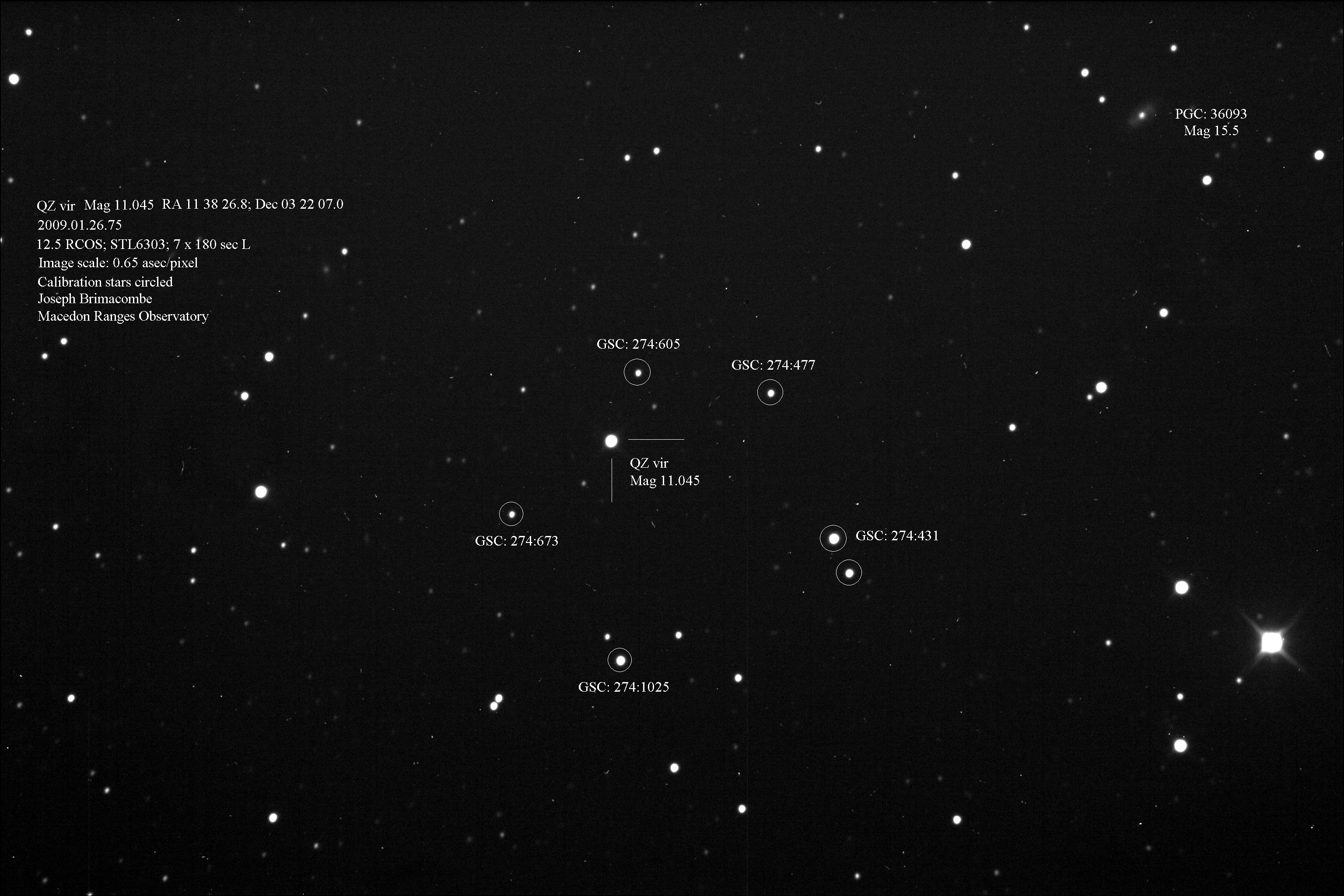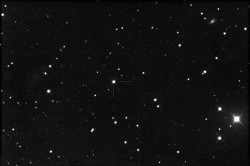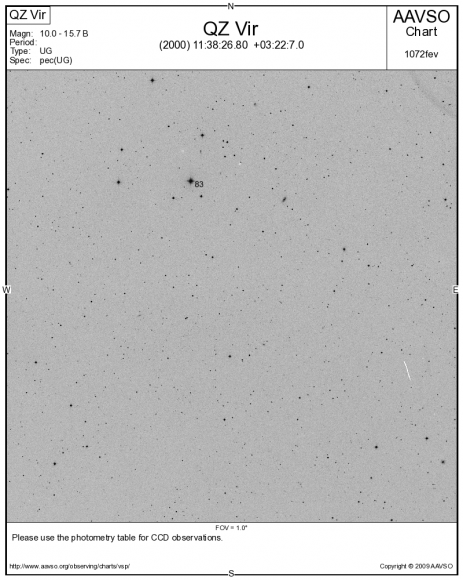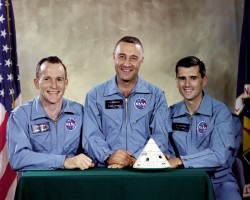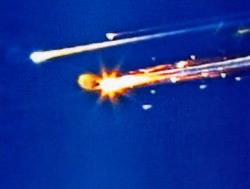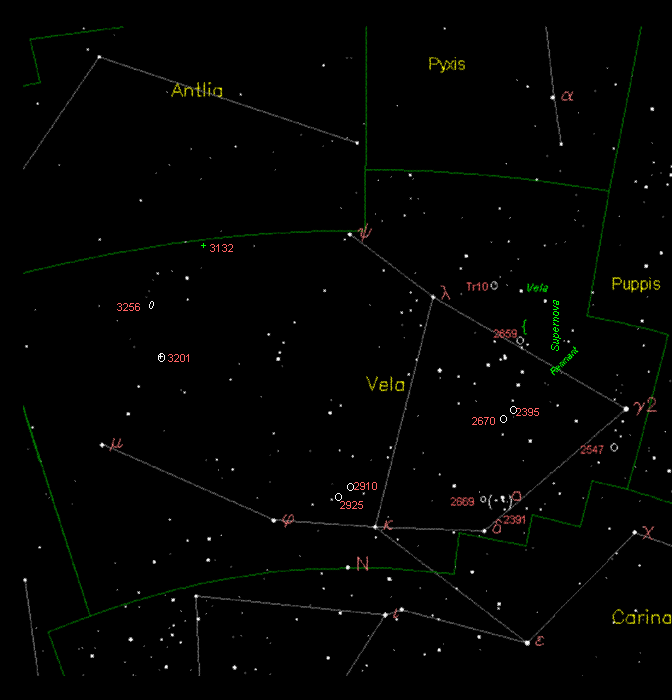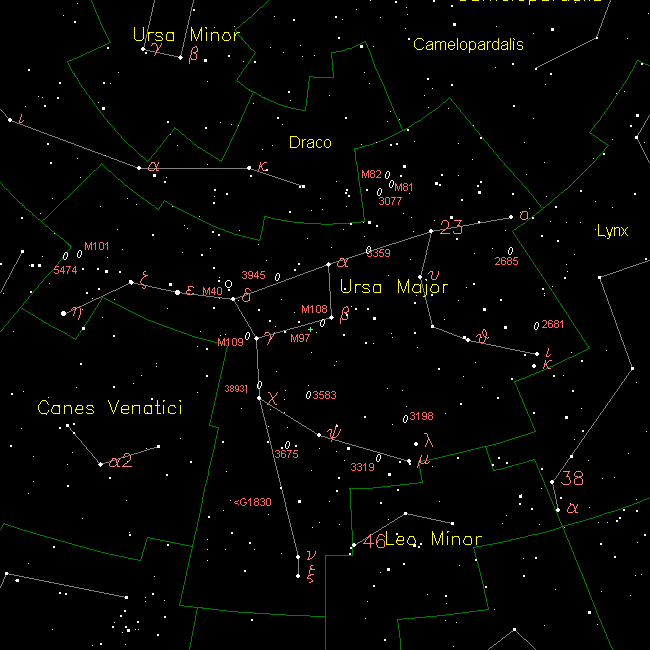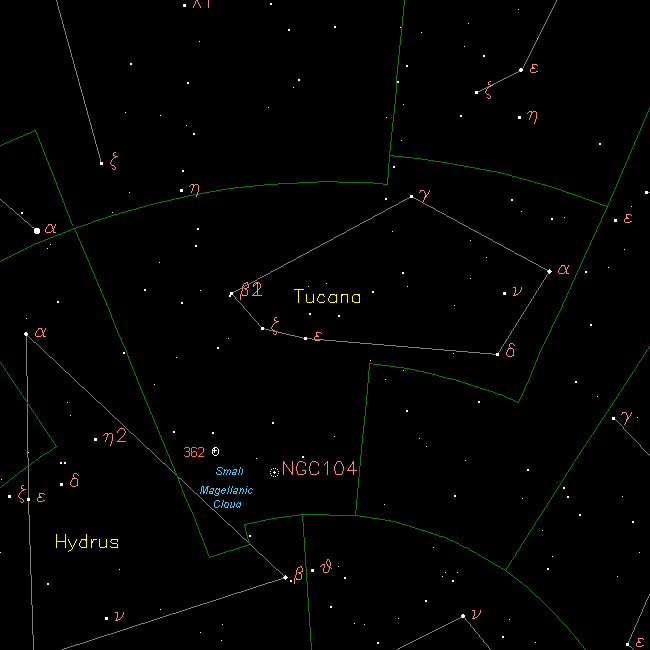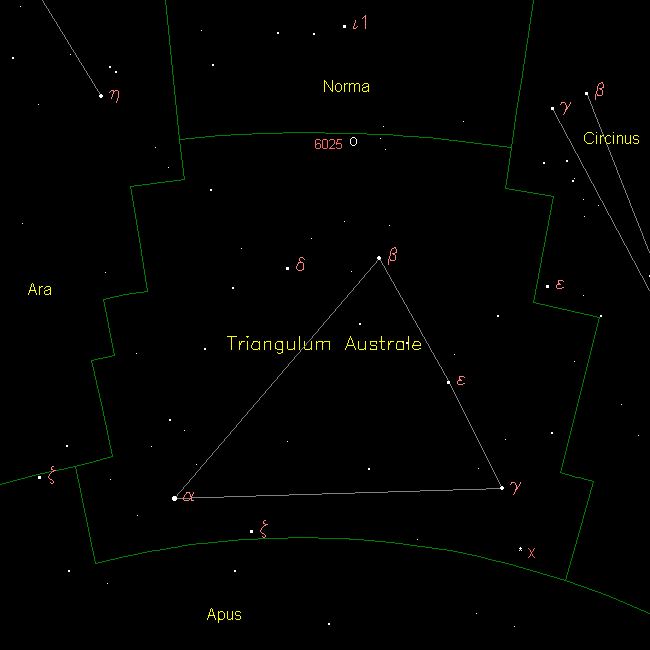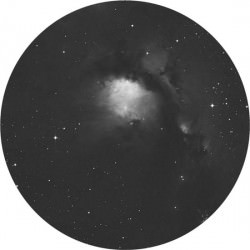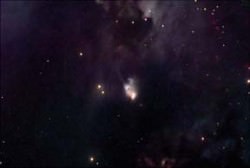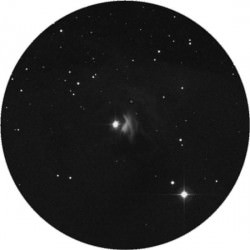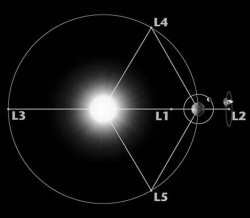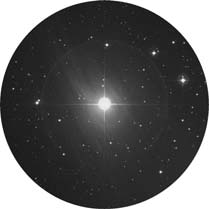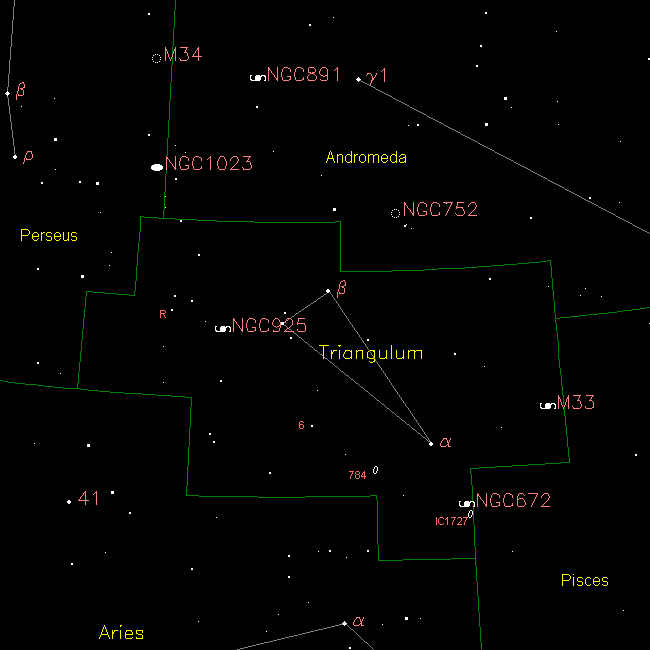[/caption]
Would look twice as sweet! Are you seeing double? No. This isn’t an eye test – rather an incredible, dimensional look at NGC 2244 – a star cluster embroiled in a reflection nebula spanning 55 light-years and most commonly called “The Rosette.” Step inside and prepare to be blown away…
Do you remember the “magic eye” puzzles that were all the rage a few years ago? They were a series of meaningless spots until you relaxed your eyes, positioned the picture just the right distance and all at once… you could see dimension. This is exactly what will happen if you open this incredible full-sized image of the Rosette done by Jukka Metsavainio. It may take you a few moments to get your eyes in just the right position away from the monitor screen, but when you do? Wow… It’s like using a binocular viewer, but in living color!
Now, let’s learn about what we’re seeing…
Located about 2500 light-years away, the galactic star cluster NGC 2244 heats the gas within the nebula to nearly 18,000 degrees Fahrenheit, causing it to emit light in a process similar to that of a fluorescent tube. A huge percentage of this light is hydrogen-alpha, which is scattered back from its dusty shell and becomes polarized. The brightest and hottest of the stars that you see here are O type main sequence beauties – over a hundred times the size and a thousand times brighter than stars like our Sun. Their solar winds and radiation scream out, stripping the dust discs away from the younger stars and igniting the area in glowing florescence.
But deep inside, astronomers have discovered a young star coughing out a complex jet of material complete with knots and bow shocks. Thanks to the “O” boys clearing away the dusty debris, we’re able to hypothesize it may be a low-mass star, stripped of its accretion disc and left to evolve on its own. According to Zoltan Balog’s 2008 study; “Our observations support theoretical predictions in which photoevaporation removes the gas relatively quickly from the outer region of a protoplanetary disk, but leaves an inner, more robust, and possibly gas-rich disk component of radius 5-10 AU. With the gas gone, larger solid bodies in the outer disk can experience a high rate of collisions and produce elevated amounts of dust. This dust is being stripped from the system by the photon pressure of the O star to form a gas-free dusty tail.”
But that’s not all that’s going on inside this double rose… According to Junfeng Wang’s study with the Chandra X-Ray telescope; “By comparing the NGC 2244 and Orion Nebula Cluster, we estimate a total population of 2000 stars in NGC 2244. The spatial distribution of X-ray stars is strongly concentrated around the central O5 star, HD 46150. The other early O star, HD 46223, has few companions. The cluster’s stellar radial density profile shows two distinctive structures surrounded by an isothermal sphere extending out with core radius. This double structure, combined with the absence of mass segregation, indicates that this 2 million old cluster is not in dynamical equilibrium. The Rosette OB X-ray spectra are soft and consistent with the standard model of small-scale shocks in the inner wind of a single massive star.”
So what’s causing it? Possibly mass stellar segregation. While that seems more like a topic for a local newspaper than for an astronomy article, it’s true! According to the research done by L. Chen in 1977 who studied membership probabilities and velocity dispersions of stars in NGC 2244 it shows; “Clear evidence of mass segregation, but doesn’t exhibit any significant velocity-mass (or, equivalently, velocity-luminosity) dependence. This provides strong support for the suggestion that the observed mass segregation is at least partially due to the way in which star formation has proceeded in these complex star-forming regions (“primordial” mass segregation).” The effects of this internal two-body relaxation, may very well have simply come from NGC 2244 splitting apart a little sooner than expected! And what caused that? A strong probability of magnetic cluster stars…
While you won’t see any red hues in visible light, aim a large pair of binoculars about a fingerwidth east of Epsilon Monoceros (RA 6:32.4 Dec +04:52) from a dark sky site and see if you can make out a vague nebulosity associated with this open cluster. Even if you can’t, it is still a wonderful cluster of stars crowned by the yellow jewel of 12 Monocerotis. With good seeing, small telescopes can easily spot the broken, patchy wreath of nebulosity around a well-resolved symmetrical concentration of stars. Larger scopes, and those with filters, will make out separate areas of the nebula which also bear their own distinctive NGC labels. No matter how you view it, the entire region is one of the best for winter skies!
My thanks once again to Jukka Metsavainio of Northern Galactic for sharing this incredible image with us.

